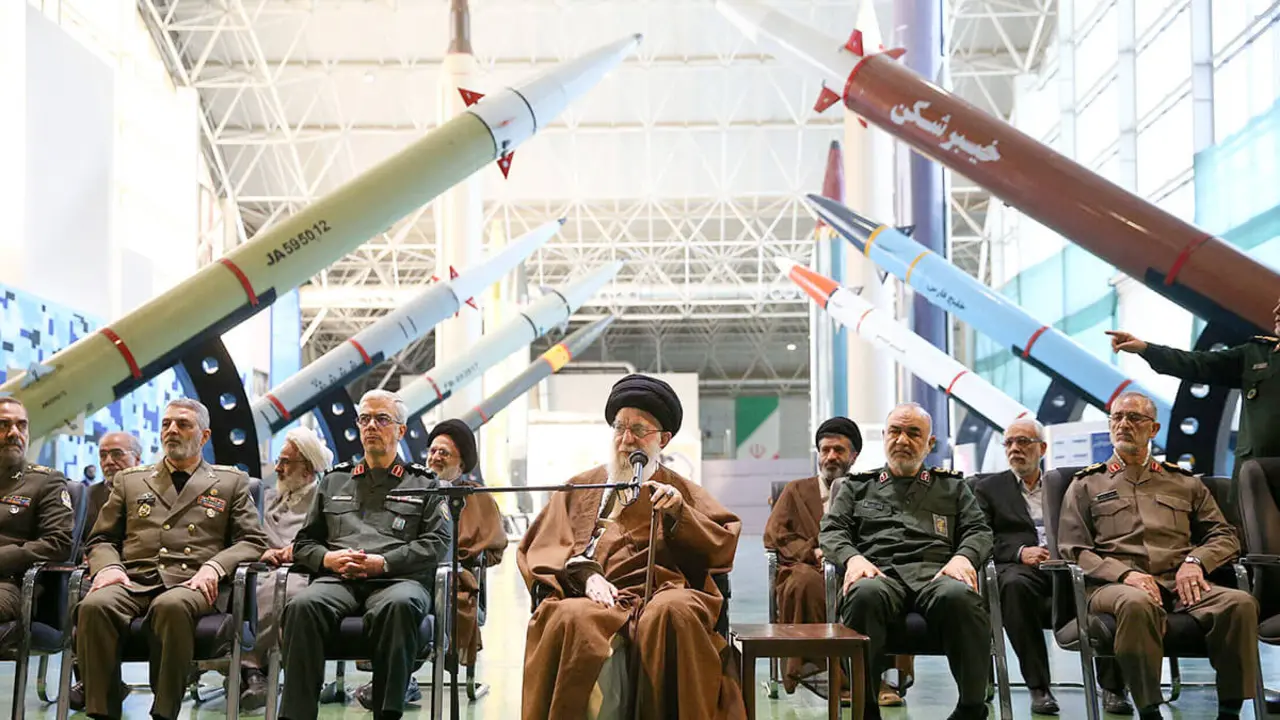Nicolas Maduro loses what was Hugo Chavez' favorite Chinese toy

Nicolas Maduro has been left overnight without his favourite toy of his beloved Hugo Chavez, his predecessor at the head of the Bolivarian Republic. The Venezuelan government has officially confirmed that it is giving up the Chinese-owned communications satellite VeneSat-1, renamed "Simon Bolibar" in homage to the liberator of the Americas.
A fatal technical anomaly has forced it out of the geostationary position it held at a height of 35,784 kilometres from the Earth's surface, a point in space at 78º West from which it moved in total synchronisation with the rotation and translation of Earth and which enabled it to always be positioned in the same place.
The VeneSat-1 was the first and only satellite communications platform owned by the Venezuelan state. Its task was to provide broadband services in telecommunications, television, video, radio and data transmission to more than 5 million people via official institutions.

The satellite was operated by the Bolivarian Agency for Space Activities (ABAE) from the Baemari ground station in the state of Guárico, in the centre of the country. Its main wholesale customer was the Compañía Anónima Nacional de Teléfonos de Venezuela (CANTV), which has hundreds of thousands of private subscribers through its subsidiary Movilnet, the state-owned company responsible for marketing mobile telephone, Internet and digital television services.
In a laconic and brief statement dated 25 March, the ministry of people's power for science and technology announced that "due to a failure, the Simón Bolíbar satellite will not continue to provide telecommunications services". The same document indicated that they were working on "the activation of priority services for the Venezuelan people.
With an estimated useful life of 15 years ending in 2024, the technical death of Venesat-1 has been a serious blow to the isolated and impoverished government of Nicolás Maduro, which is currently fighting to contain the progressive expansion of the coronavirus, which already has more than 150 infected people in the country, according to official figures.

The absolute loss of the Chinese-made satellite has forced the Chavista government to urgently seek a commercial platform to replace the communications offered by the Simon Bolibar. Everything points to the fact that Maduro's government has had to negotiate and sign a contract with the multinational company Intelsat, which has 16 satellites in service around the Earth. Of all of them, Intelsat-14 is located in an orbital position -45° West - which also sends its signals over the Caribbean and South American countries.
Regardless of the alternative satellite contracted, the migration of services has become a reality as of 25 March, forcing subscribers to redirect their antennas to capture the broadcasts partially transferred to the satellite replacing the one that is already part of history.
The surprising end of the VeneSat-1 has accelerated the meetings between the high political and space authorities of Caracas and Beijing. Its aim is to finalize the terms of a contract to develop, manufacture and launch the future VeneSat-2, which has already been named "Guaicaipuro", in homage to a 16th century warlord whom Chavism describes as a "hero of resistance against imperialism".

The "Guaicaipuro" was scheduled to overlap with Simon Bolívar and take over in 2024, when the VeneSat-1 operations came to an end. But now we have to speed up the production of the new satellite, which could be prolonged for two or three years and as long as Nicolas Maduro's government offers sufficient guarantees to China of its payment through concessions or any other means.
The existence of a serious problem in Venesat-1 was detected on March 13 by ExoAnalytics Solutions, a North American firm specialized in tracking satellite traffic and space junk to avoid collisions. On that date, the company's operators observed that the Venezuelan device was moving 30 degrees away from its position in space, which ExoAnalytics described as a "significant" change in orbit.
The finding was also confirmed by AGI, another U.S. company with space surveillance applications. Both detected that the VeneSat-1 was progressively deviating from its orbital position. Both entities suggest that VeneSat-1 operators lost contact with the satellite while trying to bring it into a so-called "graveyard" orbit.

Geostationary satellites that have completed their useful life or are irretrievably damaged are moved into "graveyard" orbits. They lie between 300 and 500 kilometres above geostationary platforms located 36,000 kilometres away, where they remain for centuries without endangering active satellites.
There are two options being considered by technicians regarding what has happened. The most likely is that the pointing sensors of the solar panels broke down, they stopped pointing at the Sun, the batteries progressively lost their power and the spacecraft stopped working. A second opinion is that the fuel indicators malfunctioned, the satellite exhausted its charge and did not give the ground technicians time to move the craft into a "graveyard" orbit.
The VeneSat-1 was built by the China Academy of Space Technology (CASC) from the DFH-4 platform, which has had two other orbital failures.

The first in the family to have a lethal failure was the SinoSat-2. Launched into space in October 2006, it failed to fully deploy its solar panels and was unable to charge its batteries and obtain the electrical power to operate.
The second to present a serious anomaly was the NigComSat-1, owned by a Nigerian state company. Placed in space in May 2007, in November 2008 it had a significant drop in electrical power due to problems with its solar panels, forcing it to abort its mission.
The premature shutdown of the Simon Bolivar does not seem to have made a dent in China's space calendar, whose next launch is precisely another spacecraft in the DFH-4 series. In this case, it is the Palapa-N1, an Indonesian satellite scheduled to be launched into space in the first ten days of April.

The VeneSat-1 space program was born under the impetus of then President Hugo Chavez, who sought to build a satellite communications infrastructure independent of large private operators on a global scale. The space cooperation agreement between Venezuela and China establishing the program was signed on Nov. 1, 2005, at the Miraflores Palace in Caracas, seat of the presidency of the Caribbean republic.
With endorsement and funding from the Beijing government, the total cost of the project was $406 million, of which $241 million was for the manufacture of the satellite and its launch into orbit, and another $165 million for the construction and equipment of the associated ground stations, as well as for the training and education in China of the Venezuelan technicians who were to control, monitor and operate the satellite.
The agreement proposed a digital satellite system for integrated services and emergency communications for creating a government network capable of providing services to state institutions, mainly the ministries of Defense and Security. It also sought to provide Internet, state television channels for telemedicine and tele-education throughout the country, as well as indigenous communities and rural areas not connected by fiber optic cables and with no access to cable television.

The satellite was launched into orbit on October 29, 2008 by a 3B long-range launcher from the Xichang space base, about 2,300 kilometers northwest of Beijing. It entered service in January 2009, about three months after being sent into space, to remain in service at least until 2024, when it was scheduled to be relieved by the VeneSat-2.
With a take-off weight of 5,049 kilograms and dimensions of 4.00 x 2.36 x 2.10 metres, it has five antennas on board and a total of 28 transponders, which we know as repeaters. A dozen of them in C-band with regional coverage, 14 in Ku-band, which mainly cover Venezuela, Bolivia and Uruguay providing TV, audio and data. Another 2 transponders broadcast in Ka-band, which only provides Internet access to Venezuela.
Venezuela has two other satellites in orbit, the VRSS-1 "Francisco de Miranda" - launched in September 2012 - and the VRSS-2 "Antonio José de Sucre" - October 2017 - but both are Earth observation satellites and do not have any communications capacity. Both have also been manufactured and sent into space by Chinese state companies.









